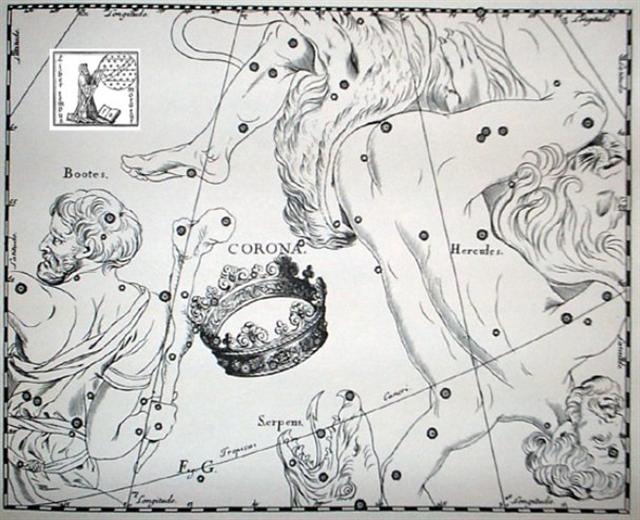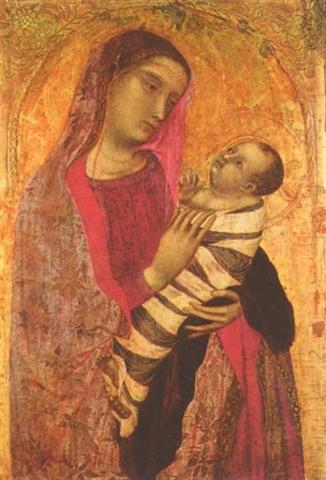Day 398 should be at a solstice in order for the orbit of Jupiter to come full cycle at the same time - at the same 'heart beat' - as when the pace of the Sun slowed down to a minimum, to a treacle:
Had Gregory XIII adjusted the Julian calendar properly he would not have put Nunki at day *288 - 4 = 284 from 0h. Instead the place for Nunki should have been in day 360 (= *280). ... When the Pope rearranged the day for spring equinox from number 84 ('March 25) to number 80 (║March 21) the earlier Julian structure was buried, was covered up (puo). At the same time the Pope deliberately avoided to correct the flow of Julian calendar days for what he may have regarded as 4 unneccesary leap days prior to the Council of Nicaea. Thus his balance sheet for days was in order. The day numbers counted from the equinox were increased with 4 and this was equal to allowing the 4 'unneccessary' leap days to remain in place. But he had moved spring equinox to a position which was 4 days too early compared to the ancient model. And he had also broken the Julian connection between the Sun year and the Sirius year. The Julian year was precisely as long as the Sirius year, but the new Gregorian year was slightly shorter - due to fewer leap days - and no longer was Sirius going to stand still in the calendar, no longer would Sirius be a marvellous star; only the brightest, which however was no mystery because there had to be some star which was brightest ... ... the Gregorian 'canoe' was 'crooked'. His calendar was not in perfect alignment with the ancient star structure ... ... There is a couple residing in one place named Kui [Tui = the Three Stars at the equator in the center of Orion] and Fakataka [Completing a Circuit]. After the couple stay together for a while Fakataka is pregnant. So they go away because they wish to go to another place - they go. The canoe goes and goes, the wind roars, the sea churns, the canoe sinks. Kui expires while Fakataka swims. Fakataka swims and swims, reaching another land. She goes there and stays on the upraised reef in the freshwater pools on the reef, and there delivers her child, a boy child. She gives him the name Taetagaloa [Not Tagaroa]. When the baby is born a golden plover flies over and alights upon the reef. (Kua fanau lā te pepe kae lele mai te tuli oi tū mai i te papa). And so the woman thus names various parts of the child beginning with the name 'the plover' (tuli): neck (tuliulu), elbow (tulilima), knee (tulivae). They go inland at the land. The child nursed and tended grows up, is able to go and play. Each day he now goes off a bit further away, moving some distance away from the house, and then returns to their house. So it goes on and the child is fully grown and goes to play far away from the place where they live. He goes over to where some work is being done by a father and son. Likāvaka is the name of the father - a canoe-builder, while his son is Kiukava. Taetagaloa goes right over there and steps forward to the stern of the canoe saying - his words are these: 'The canoe is crooked.' (kalo ki ama). Instantly Likāvaka is enraged at the words of the child. Likāvaka says: 'Who the hell are you to come and tell me that the canoe is crooked?' Taetagaloa replies: 'Come and stand over here and see that the canoe is crooked.' Likāvaka goes over and stands right at the place Taetagaloa told him to at the stern of the canoe. Looking forward, Taetagaloa is right, the canoe is crooked. He slices through all the lashings of the canoe to straighten the timbers. He realigns the timbers. First he must again position the supports, then place the timbers correctly in them, but Kuikava the son of Likāvaka goes over and stands upon one support. His father Likāvaka rushes right over and strikes his son Kuikava with his adze. Thus Kuikava dies. Taetagaloa goes over at once and brings the son of Likāvaka, Kuikava, back to life. Then he again aligns the supports correctly and helps Likāvaka in building the canoe. Working working it is finished ... His day for the winter solstice (░December 21, 355) was at stars which should have arrived 4 days earlier in his calendar. Nunki should have risen in day *280 + 80 = 360 = 364 - 4. And Gregory had placed his Christmas Eve 96 + 183 = 279 days after the astronomically correct day for the spring equinox, i.e. day 79 = 6 * 13 + 1 (= 779.96 / 10╣ + 1): ... Ecclesiastically, the equinox is reckoned to be on 21 March (even though the equinox occurs, astronomically speaking, on 20 March in most years) ...
Therefore - and by using the Gregorian 'crooked' calendar - it could be deduced from extrapolating backwards in time, that the star Gemma (α Corona Borealis) would have culminated in day 115 (APRIL 25) at the time of the Bull (i.e., not at the correct day number 111). ... Later on in this series of rituals, the Chorti go through a ceremony they call raising the sky. This ritual takes place at midnight on the twenty-fifth of April and continues each night until the rains arrive. In this ceremony two diviners and their wives sit on benches so that they occupy the corner positions of the cosmic square. They take their seats in the same order as the stones were placed, with the men on the eastern side and the women on the west. The ritual actions of sitting down and lifting upward are done with great precision and care, because they are directly related to the actions done by the gods at Creation. The people represent the gods of the four corners and the clouds that cover the earth. As they rise from their seats, they metaphorically lift the sky. If their lifting motion is uneven, the rains will be irregular and harmful ...
... In other words, the ancient Druidic religion based on the oak-cult will be swept away by Christianity and the door - the god Llyr - will languish forgotten in the Castle of Arianrhod, the Corona Borealis. This helps us to understand the relationship at Rome of Janus and the White Goddess Cardea who is ... the Goddess of Hinges who came to Rome from Alba Longa. She was the hinge on which the year swung - the ancient Latin, not the Etruscan year - and her importance as such is recorded in the Latin adjective cardinalis - as we say in English 'of cardinal importance - which was also applied to the four main winds; for winds were considered as under the sole direction of the Great Goddess until Classical times. As Cardea she ruled over the Celestial Hinge at the back of the North Wind around which, as Varro explains in his De Re Rustica, the mill-stone of the Universe revolves. This conception appears most plainly in the Norse Edda, where the giantesses Fenja and Menja, who turn the monstrous mill-stone Grotte in the cold polar night, stand for the White Goddess in her complementary moods of creation and destruction. Elsewhere in Norse mythology the Goddess is nine-fold: the nine giantesses who were joint-mothers of the hero Rig, alias Heimdall, the inventor of the Norse social system, similarly turned the cosmic mill. Janus was perhaps not originally double-headed: he may have borrowed this peculiarity from the Goddess herself who at the Carmentalia, the Carmenta Festival in early January, was addressed by her celebrants as 'Postvorta' and 'Antevorta' - 'she who looks both back and forward'. However, a Janus with long hair and wings appear on an early stater of Mellos, a Cretan colony at Cilicia. He is identified with the solar hero Talus, and a bull's head appears on the same coin. In similar coins of the late fifth century B.C. he holds an eight-rayed disc in his hand and has a spiral of immortality sprouting from his double head. Here at last I can complete my argument about Arianrhod's Castle and the 'whirling round without motion between three elements'. The sacred oak-king was killed at midsummer and translated to the Corona Borealis, presided over by the White Goddess, which was then just dipping over the Northern horizon. But from the song ascribed by Apollonius Rhodius to Orpheus, we know that the Queen of the Circling Universe, Eurynome, alias Cardea, was identical with Rhea of Crete; thus Rhea lived at the axle of the mill, whirling around without motion, as well as on the Galaxy. This suggests that in a later mythological tradition the sacred king went to serve her at the Mill, not in the Castle, for Samson after his blinding and enervation turned a mill in Delilah's prison-house. Another name for the Goddess of the Mill was Artemis Calliste, or Callisto ('Most Beautiful'), to whom the she-bear was sacred in Arcadia; and in Athens at the festival of Artemis Brauronia, a girl of ten years old and a girl of five, dressed in saffron-yellow robes in honour of the moon, played the part of sacred bears. The Great She-bear and Little She-bear are still the names of the two constellations that turn the mill around. In Greek the Great Bear Callisto was also called Helice, which means both 'that which turns' and 'willow-branch' - a reminder that the willow was sacred to the same Goddess ... These details are all very complicated, but we can understand the basic idea: After having completed 398 full days the cycle of Jupiter should come to its end and therefore also the Sun (and everyone else) should preferably slow down to a halt. ... During the Macahity, all punishments are remitted throughout the country; and no person can leave the place in which he commences these holidays, let the affair be ever so important ... A new year should begin right at the solstice. ... That the Sun-gods Dionysus, Apollo and Mithras were all also reputedly born at the Winter solstice is well known, and the Christian Church first fixed the Nativity feast of Jesus Christ at the same season, in the year A.D. 273. St. Chrysostom, a century later, said that the intention was that 'while the heathen were busied with their profane rites the Christians might perform their holy ones without disturbance', but justified the date as suitable for one who was 'the Sun of Righteousness' ... However, the 13th Gregory had now severed the Nativity (birth) from the Solstice, inserted 4 days between death and birth. This could explain the 2 + 2 'feathers' (at bottom hanging down and at top growing) between the Tree (Rakau) and Raaraa (the Central Ceremonial Ground):
|
||||||||||||||||||||||||||||||||||||||||||||||||||||||||||||||||||||||||||||||||||||||||||||||||||||||||||||||||||||||||||||||||||||||||||||||||||||||||||||||||||||||||||||||||








